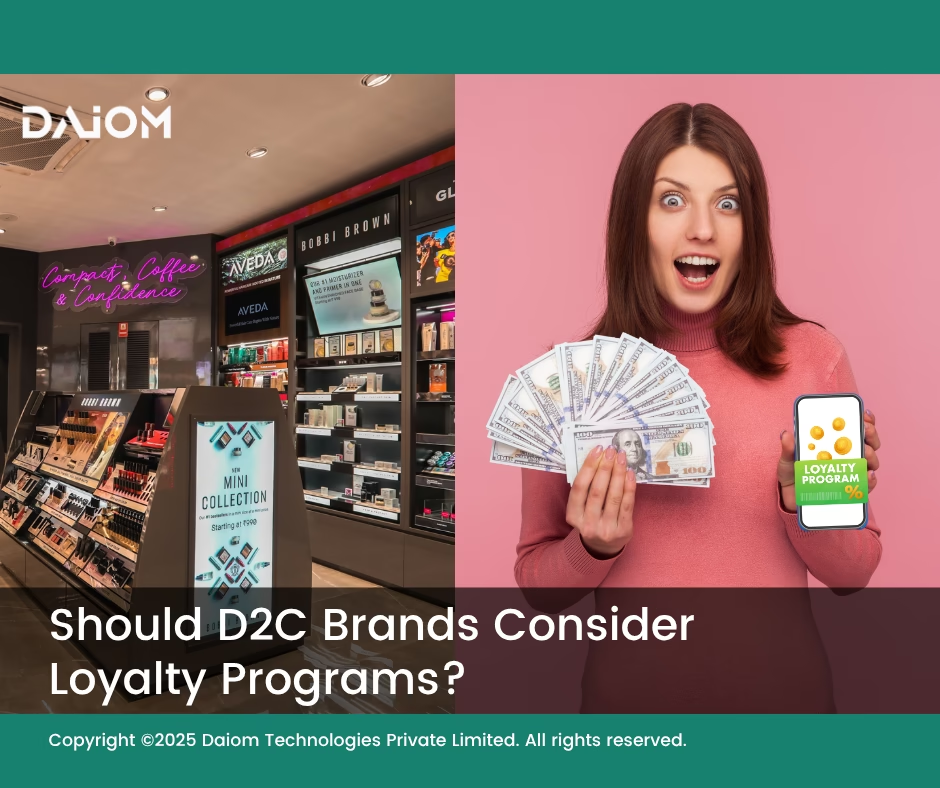When it comes to D2C (Direct-to-Consumer) brands, one thing is always true—getting your customer to come back and shop again is far more valuable than making a sale just once.
Read more – Everything You Need to Know About Repeat Customer Rate
Repeat customers help reduce your marketing costs, build long-term trust, and increase the lifetime value of every customer.
This is where loyalty programs come in.
They are a great way to encourage customers to keep buying from you. Brands use loyalty programs to reward shoppers for simple actions—like signing up, placing repeat orders, following the brand on social media, or referring friends. These little rewards make customers feel special and motivate them to return for more.
But—not every brand may benefit from a loyalty program.
Loyalty programs work best when your products have high buying frequency. For example—if you sell skincare, snacks, or daily essentials, customers are likely to buy again soon. Here, a loyalty program can push them to reorder quicker or try more products.
However, if your brand sells high-ticket or low-frequency items—like luxury furniture, electronics, or wedding outfits—a loyalty program may not make sense.
Why?
Because your customers may not shop again for months or even years. In such cases, giving loyalty points won’t create value for them—or for you.
Also, if your brand doesn’t have a strong value proposition or clear reasons for customers to stay loyal, then even the best loyalty program won’t help. Before adding points or rewards, make sure your product and service give customers a reason to come back on their own.
This blog will explain why loyalty programs can be essential for scaling a D2C business sustainably and how they contribute to long-term success.
"Customer loyalty is the result of consistently delivering a great experience and rewarding repeat behavior."
Shep Hyken
Table of Contents
- How D2C Brands Can Reward Customers?
- How Can D2C Brands Set Up Loyalty Programs Easily?
- What Are The Off-the-Shelf Frameworks for Building Effective Loyalty Programs?
- When Should D2C Brands Not Consider a Loyalty Program?
- When Should D2C Brands Choose a Multi-Brand Loyalty Program Like POPcoins?
- Conclusion
1. How D2C Brands Can Reward Customers?
Loyalty programs are designed to make customers feel valued and appreciated. But how can D2C brands actually reward their customers? Let’s understand some of the most common and simple ways:
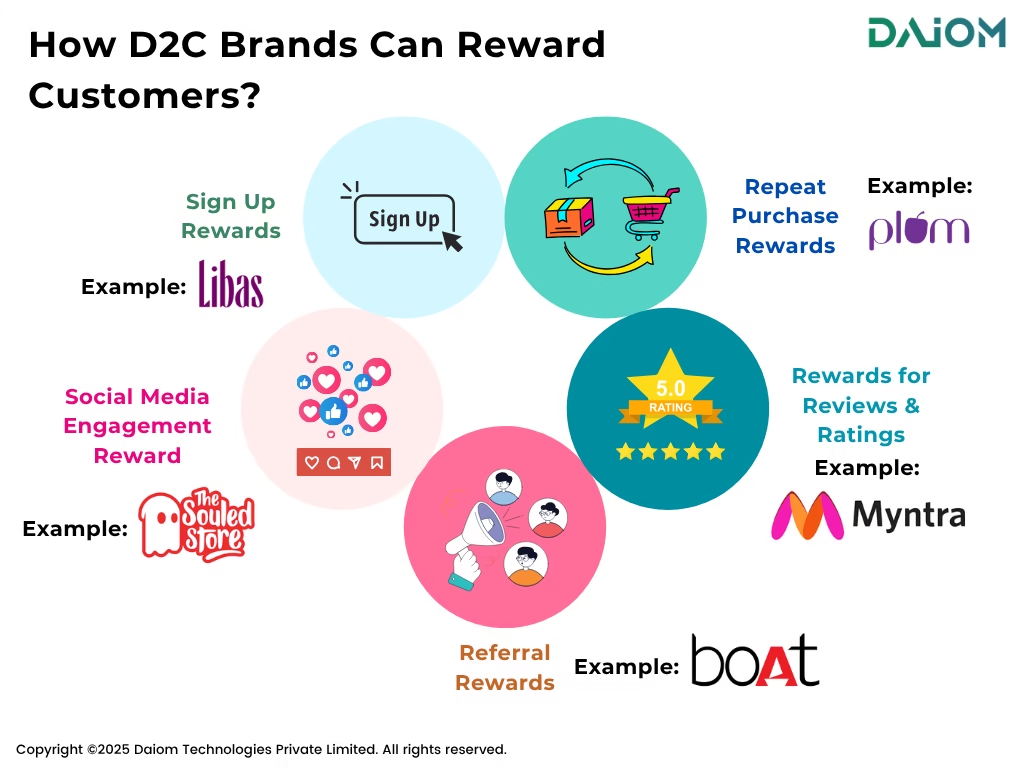
1.1 Reward for Signing Up
The first thing any new customer does on a D2C website is signing up or creating an account. Brands can make this step more exciting by offering small rewards.
This could be in the form of loyalty points, a discount on their first order, or a small free sample included with their first purchase.
Read more – Points Vs. Cashback: What Drives Customer Loyalty?
Example: Libas offers discounts and points for new customers who sign up on their website.
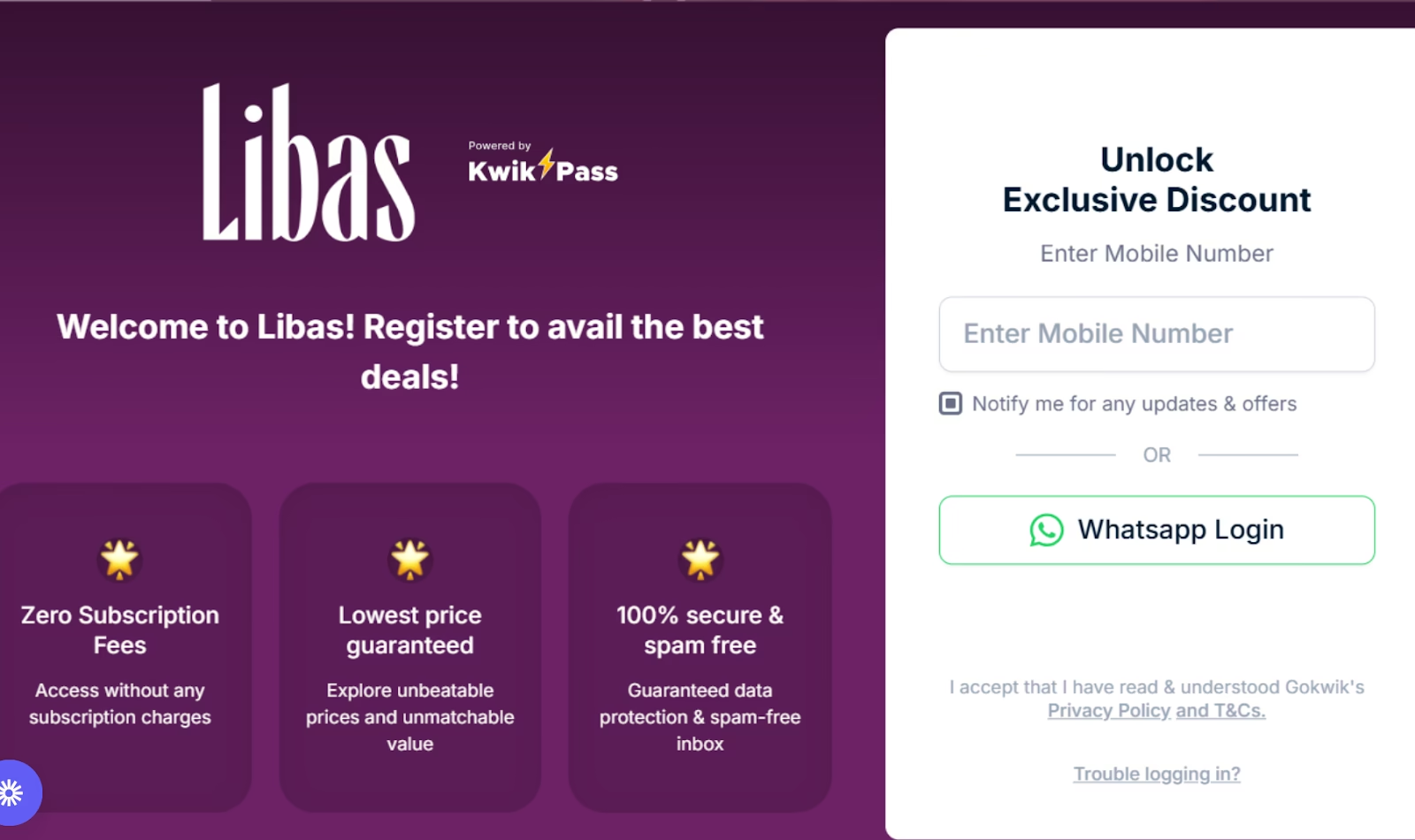
1.2 Reward for Repeat Orders
One of the main goals of any loyalty program is to get customers to shop again and again. To make this happen, brands reward customers with points or rewards every time they place an order.
The more they buy, the more points they earn, which can later be used for discounts or free products.
Example: Plum Goodness runs a reward program where loyal customers earn points with every repeat order, which can be redeemed on future purchases.
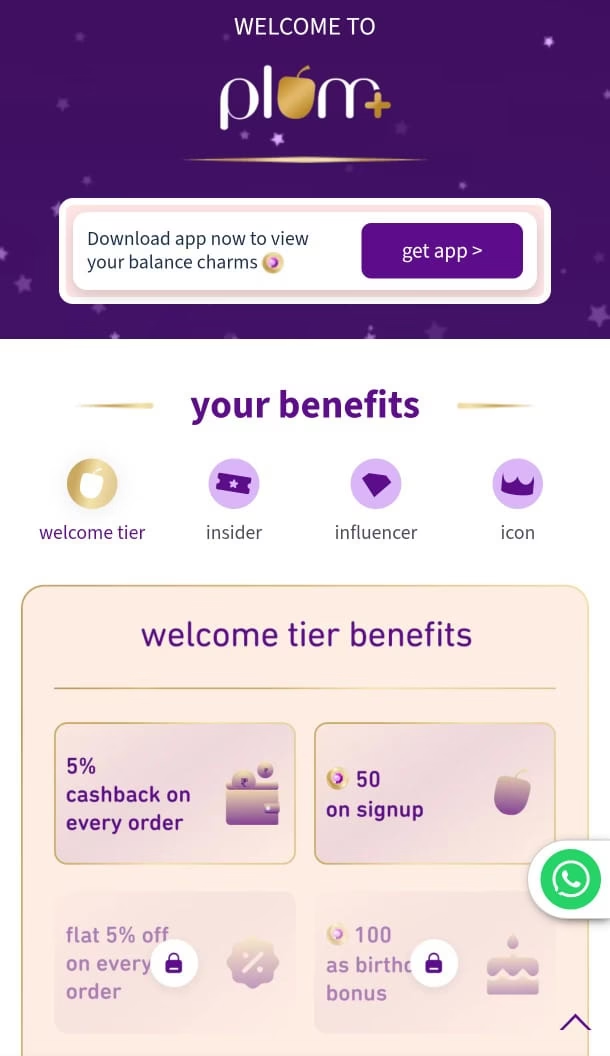
1.3 Reward for Social Media Engagement
Brands also want to stay connected with their customers on social media platforms like Instagram, Facebook, or Twitter. To encourage this, brands offer rewards when customers follow their pages, like posts, or take part in contests. These activities help the brand stay fresh in the customer’s mind and increase engagement.
Example: The Souled Store runs frequent social media contests and giveaways to encourage followers to engage with their posts and stories.

1.4 Reward for Referring Friends
Word-of-mouth marketing is a powerful way for brands to get new customers. That’s why many brands reward existing customers for referring their friends. Usually, the customer receives a unique referral link. When a friend makes a purchase using this link, both the friend and the customer get points or discounts.
Example: Boat offers its customers reward points when they refer friends who make a purchase.
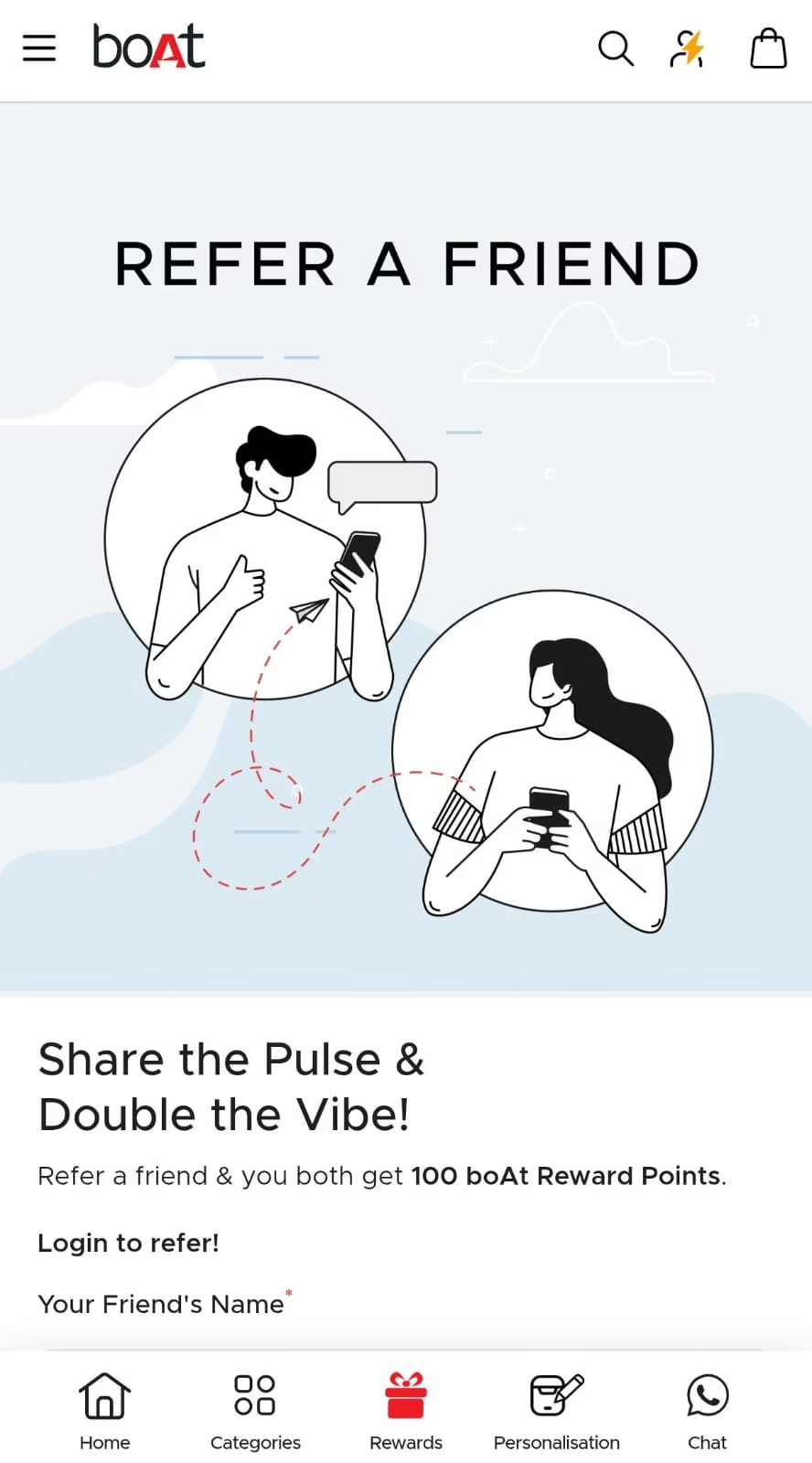
1.5 Reward for Transactions
A transaction-based, points loyalty program is where customers earn a percentage of their purchase value as points. These points can later be redeemed to get discounts on future purchases, usually up to a set limit (like 20% of the cart value).
Points are typically credited after the return window closes, have a fixed validity period, and may not be combined with other offers. Some programs also reward actions like gift card purchases or reviews. It’s a simple and effective model to encourage repeat purchases while giving customers tangible value.
Example: The Rare Club Membership is a customer-friendly loyalty program designed to reward regular shoppers at The House of Rare. Every time you shop online with your registered account, you earn up to 5% of your total bill (in multiples of 100) as loyalty points—where 1 point equals 1 INR. For example, on a ₹4,000 online purchase, you’ll receive 200 points.
These points become redeemable after the return period ends and can be used for up to 20% of your cart value, in-store or online. You can also earn points while buying gift cards (but not when using them). Points remain valid for 90 days (online) or 1 year (offline), are non-transferable, and cannot be clubbed with other discounts. With a clear transaction history available in your account and a seamless redemption process using your phone number, the Rare Club makes loyalty rewarding and simple.
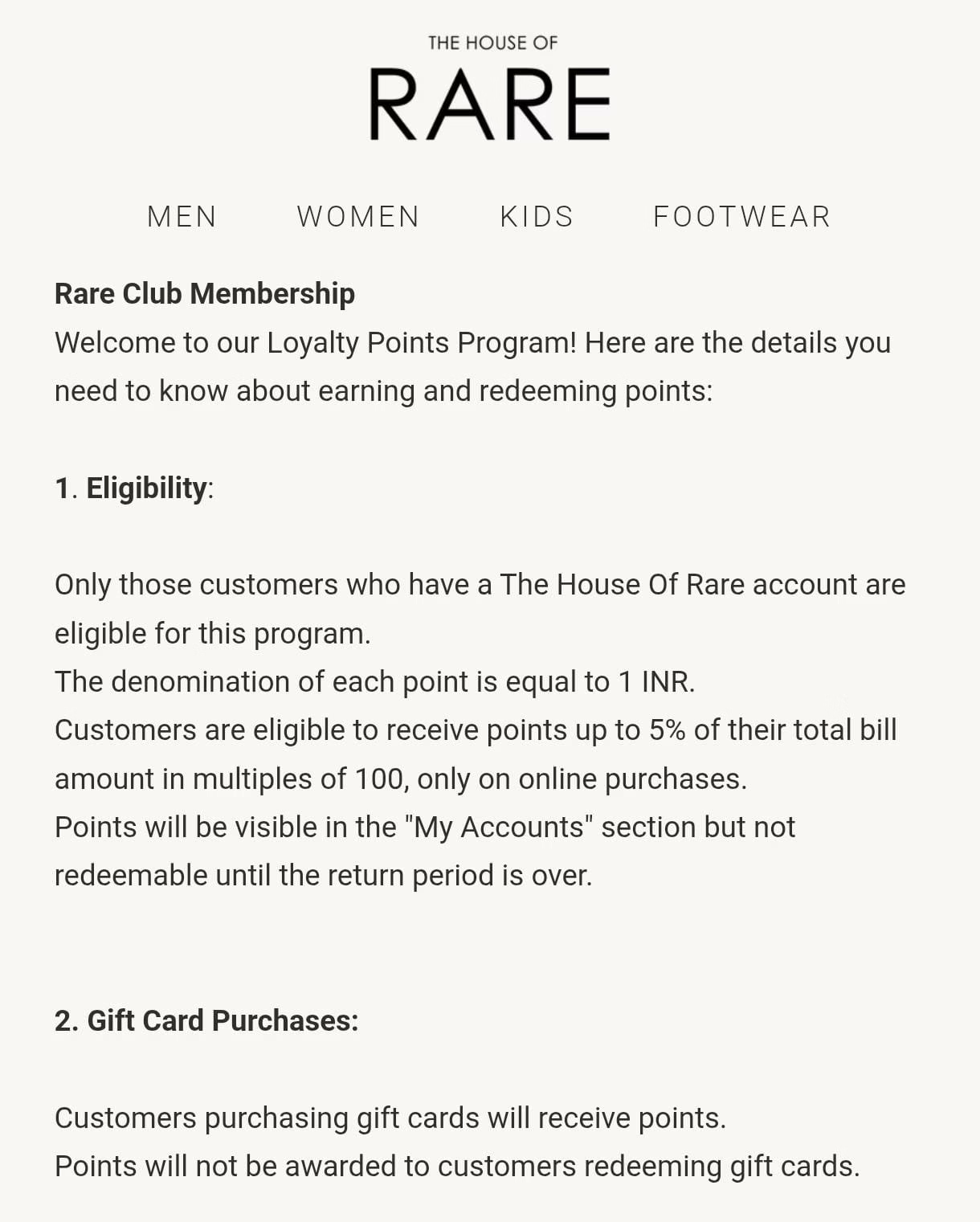
2. What Are The Off-the-Shelf Frameworks for Building Effective Loyalty Programs?
By building loyalty, D2C brands can reduce churn, create a steady revenue base, and leverage their most engaged customers as brand ambassadors. Here are some of the tools they can use to build loyalty programs easily:
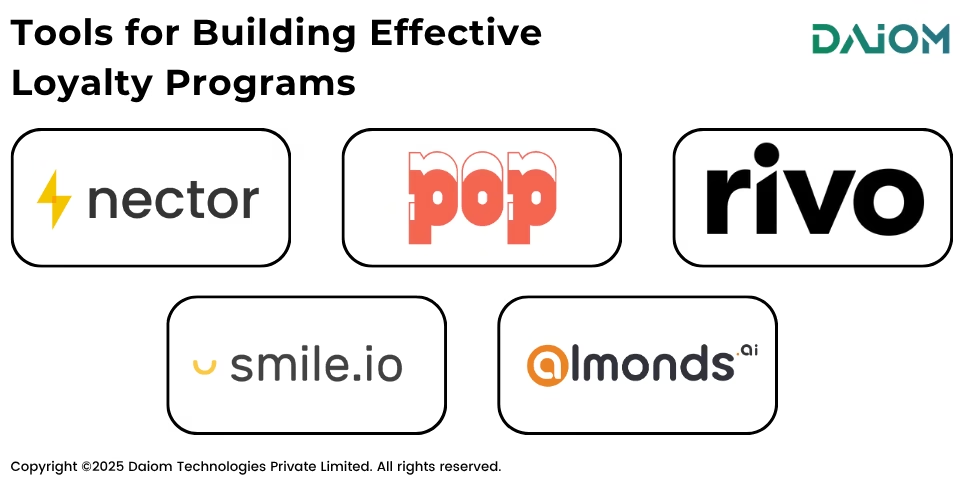
1. Nector.io
If you are a D2C brand looking to set up a loyalty program easily without technical headaches, Nector.io could be the perfect fit. It’s an all-in-one loyalty, reviews, and referral platform designed to help brands keep customers engaged, happy, and coming back for more.
With Nector, brands can create their own loyalty program in just a few clicks. You can decide how many points customers earn for actions like signing up, placing repeat orders, referring friends, or even following you on social media.
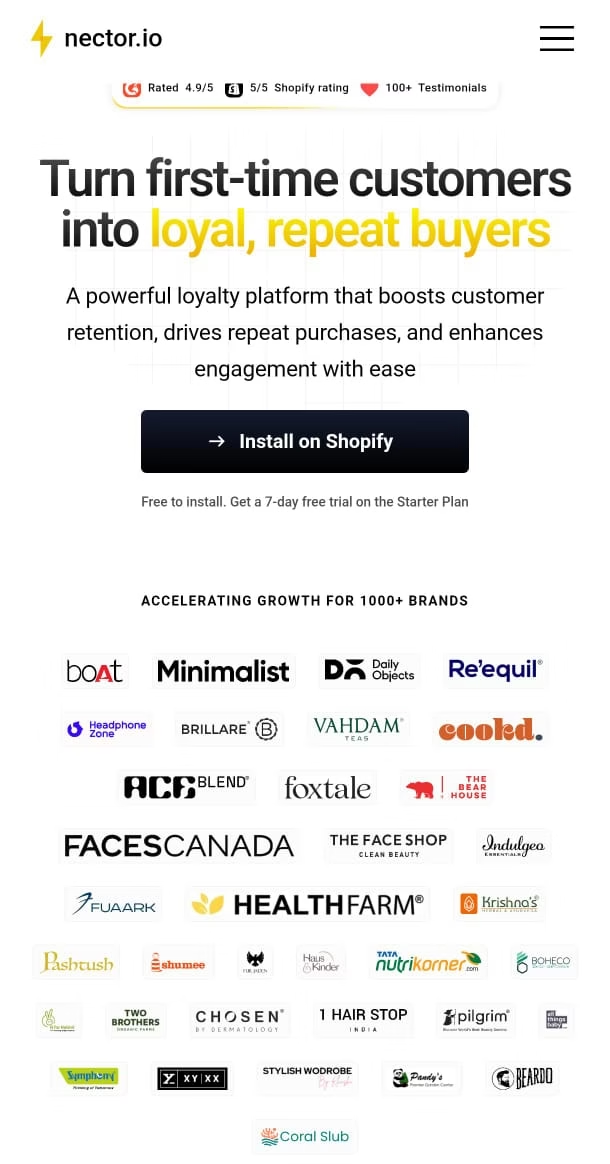
The best part is you can fully customise the rewards—whether it’s points, discounts, or free gifts. This gives brands complete control over how the loyalty program functions.
Nector.io easily connects with popular tools you might already be using—like Klaviyo, Omnisend, CleverTap, and others. This means you can seamlessly send reward updates via email or show review requests to your buyers—without switching platforms.
Example brands using Nector.io: Power Gummies, The Ayurveda Co.
2. POPcoins
POPcoins is a plug-and-play loyalty solution with a 1:1 reward system (1 POPcoin = ₹1), letting customers earn points for purchases and social engagement. With easy mobile OTP login and one-click redemption, it ensures a smooth user experience.
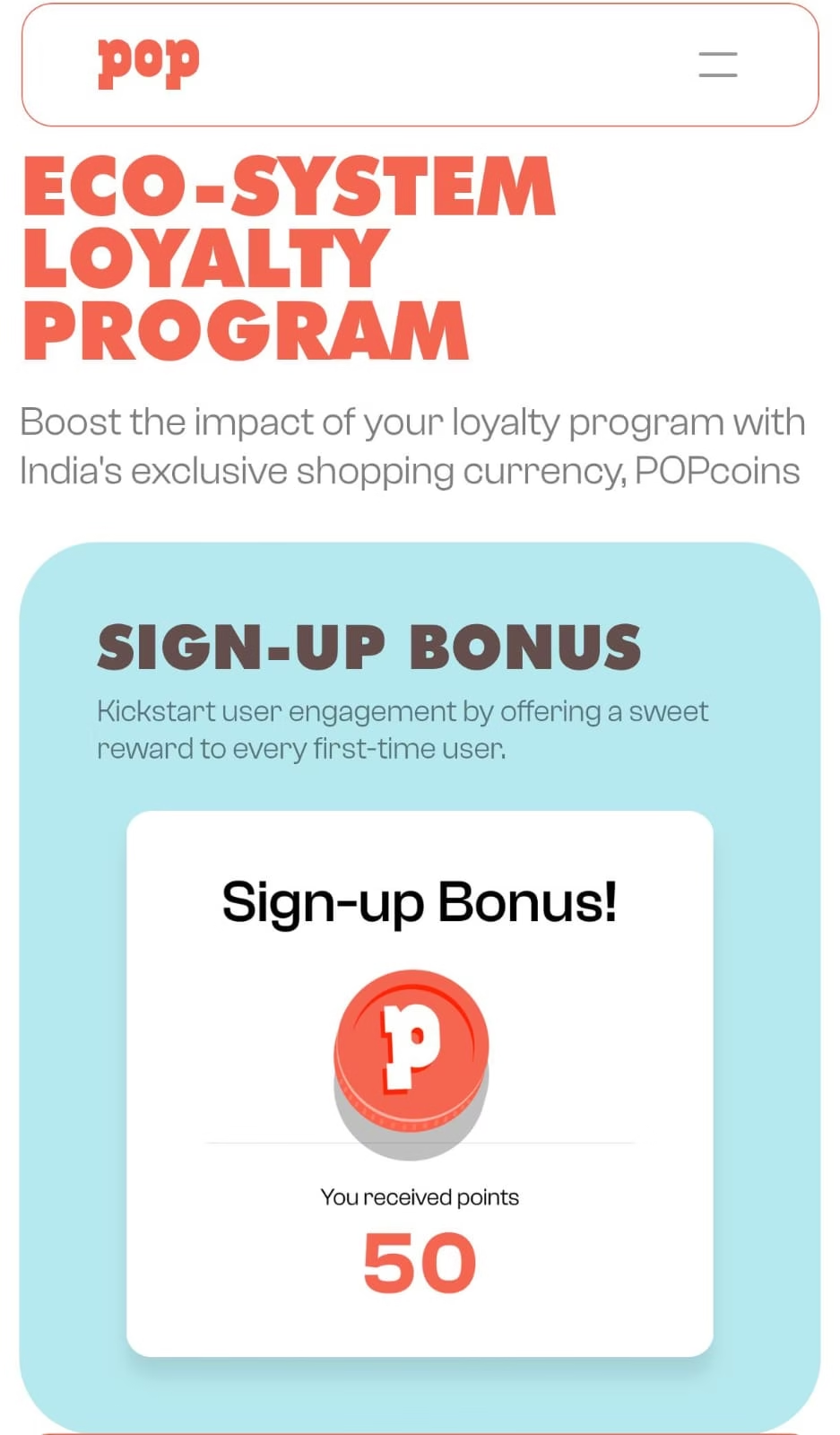
Features like gamified tiers and basket-building discounts boost average order value, while Shopify integration and compatibility with tools like Contlo and MoEngage make setup effortless. The program is visible across key pages to drive engagement and offers analytics and 24/7 support. Brands using POPcoins have seen up to 5X sign-ups, 60%+ conversions, and 30%+ growth in orders and retention.
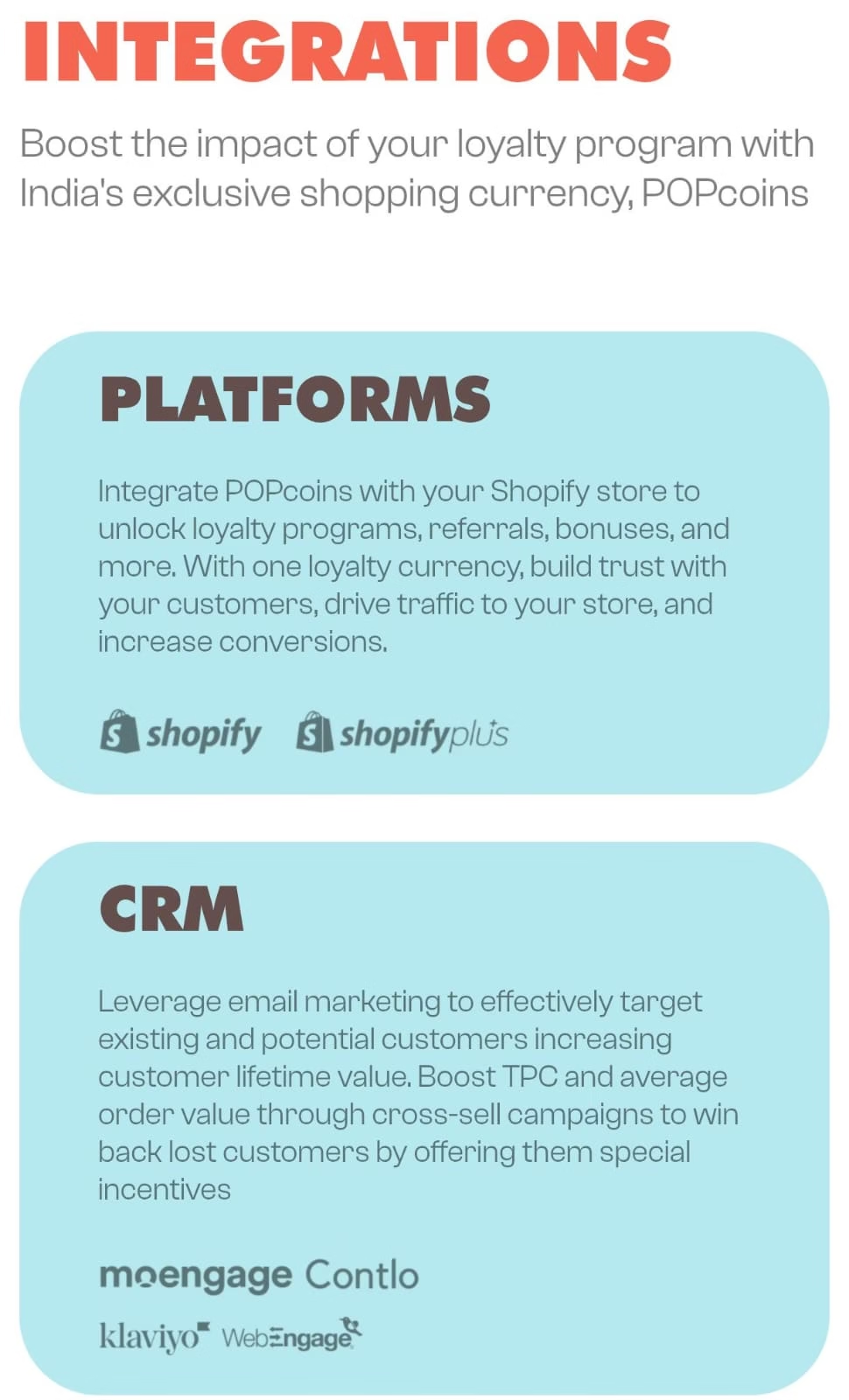
POPcoins adds a fresh twist to loyalty programs. The points that customers earn on your store can also be used to shop from other partner brands—and vice versa.
This shared points system helps brands attract new shoppers from other stores that use Popcoins. It also helps reduce customer acquisition costs (CAC) since customers may discover your brand while redeeming Popcoins elsewhere.
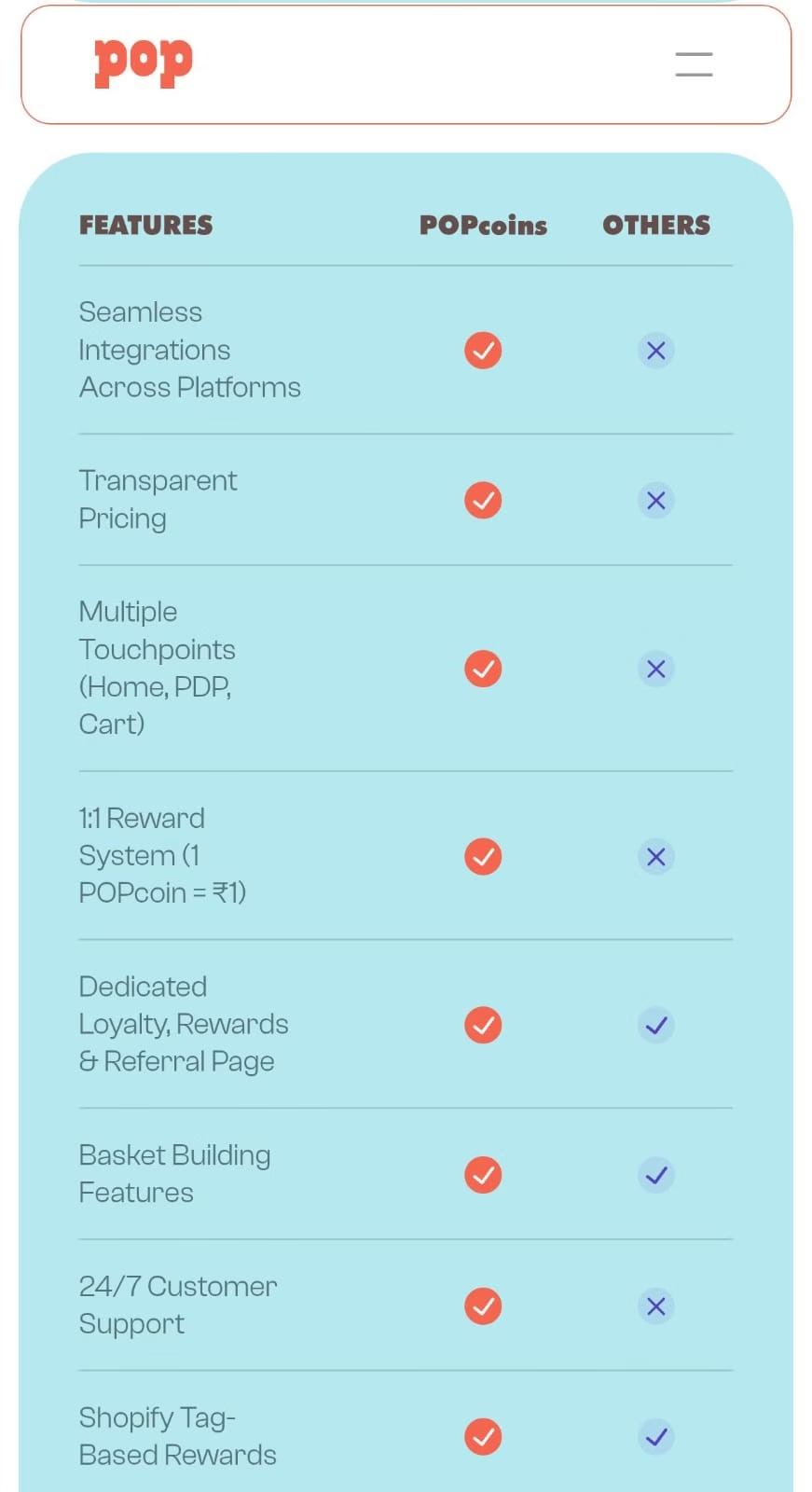
Example brands using Popcoins: Pilgrim, True Elements, boAt, Foxtale, WOW Skin Sciences and more.
3. Rivo
Rivo is a Shopify-exclusive loyalty and referral platform designed for direct-to-consumer (D2C) brands seeking an easy-to-use, highly customizable solution to boost customer retention and repeat purchases.

Rivo is ideal for Shopify merchants who want a modern, scalable loyalty solution with strong customization and integration options, but may not offer the most advanced analytics or multi-channel support compared to some competitors.
Example brands globally using Rivo: Polaroid Originals, Inkbox.
2.1 Companies That Offer Customizable Loyalty Program Solutions
If you’re looking for ready-made, easy-to-use platforms to launch or manage your loyalty program, here are four companies that offer customizable, do-it-yourself (DIY) solutions. These platforms are designed to help you set up rewards, manage users, and track performance — all without needing heavy tech support.
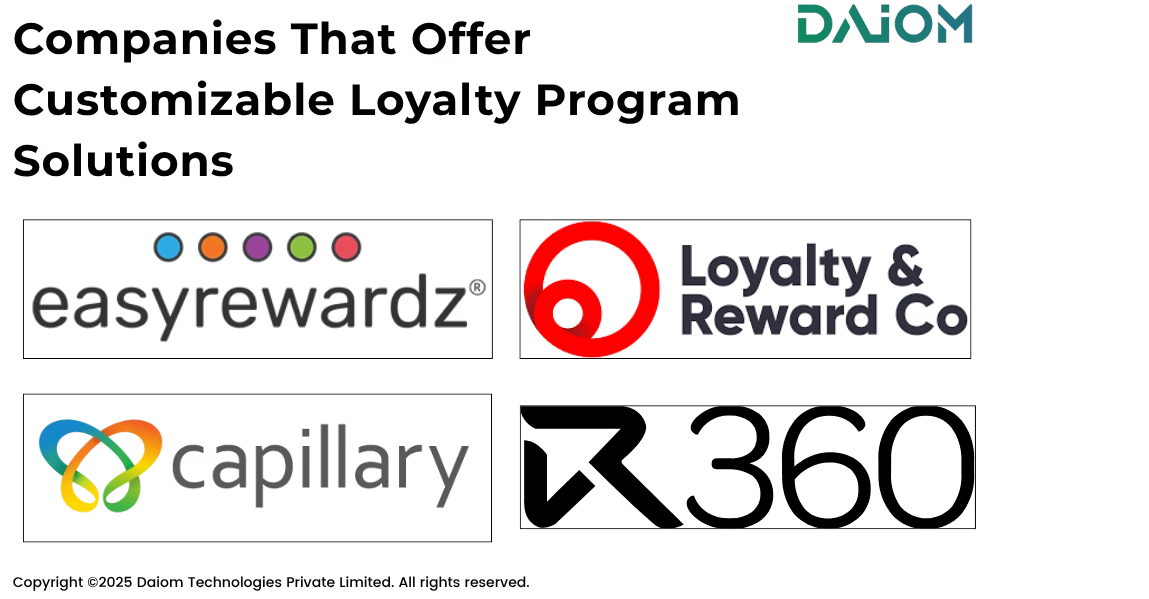
- EasyRewards – A user-friendly platform with basic to advanced reward options. Great for small to mid-sized businesses looking to launch quickly.
- LoyaltyRewards – Known for its flexibility and analytics dashboard. It helps businesses create tailored reward journeys based on customer behavior.
- Capillary Technologies – A more advanced solution offering AI-driven loyalty features, personalization, and omnichannel integration. Ideal for larger businesses or brands looking to scale.
- Reward360 – Offers a full-stack loyalty platform with modular features like point systems, gamification, and tier-based rewards. Suited for companies that want more control and customization.
These platforms help you move fast and start small — but they also scale as your business grows. Whether you want a simple points system or a fully integrated experience, these tools make it easier to build and manage your program efficiently.
3. When Should D2C Brands Not Consider a Loyalty Program?
Not all D2C brands need loyalty programs. Here are some cases where loyalty programs may not make sense:
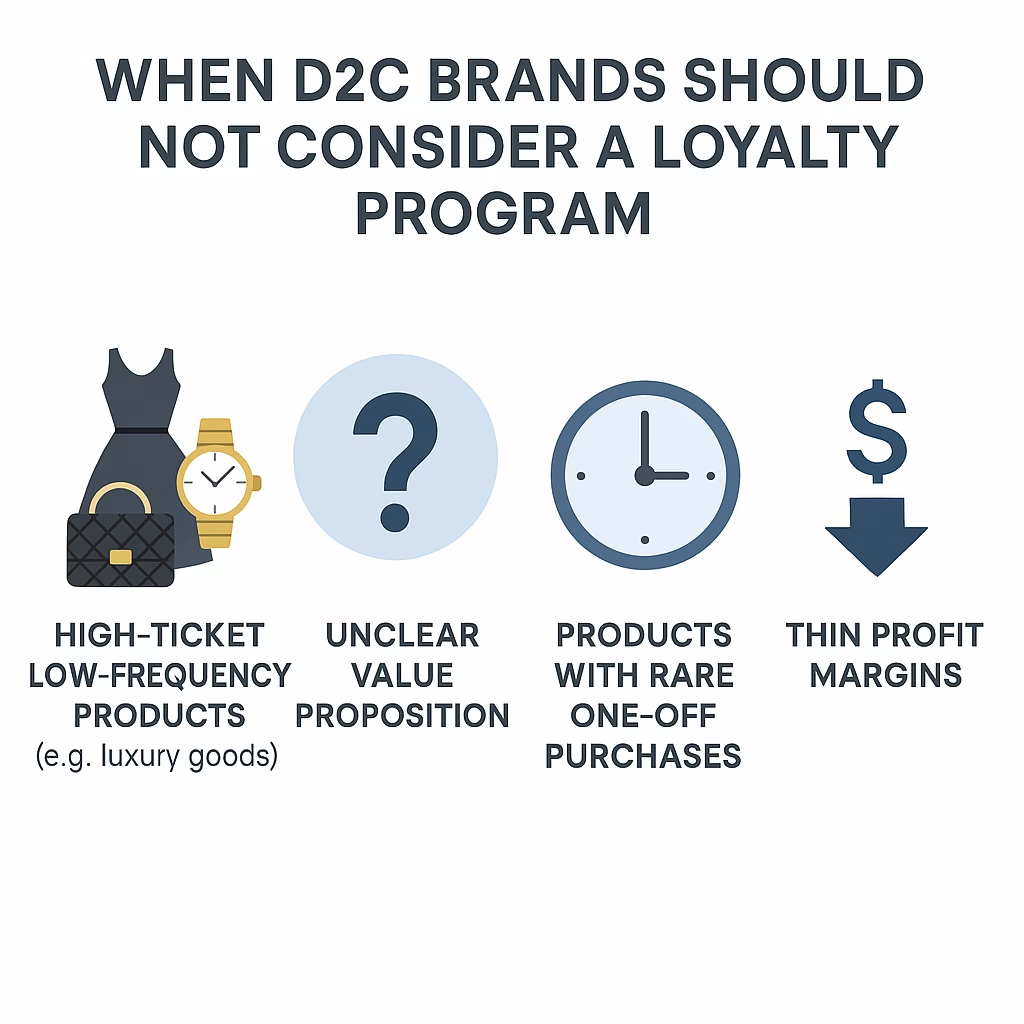
- High-Ticket, Low-Frequency Products: If you sell expensive items that people buy once every few years—like furniture or luxury goods—a loyalty program might not deliver enough value. Customers are not likely to make frequent repeat purchases in this category.
- If You Have No Clear Value Proposition: A loyalty program cannot fix weak branding or unclear product benefits. If your store doesn’t have a strong reason for customers to come back—like quality, price, or uniqueness—then no reward program will save it.
- When Frequency Can’t Be Driven Higher: Loyalty programs work best when you can naturally get customers to buy more often. For example, in categories like beauty, fashion, or food supplements. But if your product is meant for rare, one-off purchases, a loyalty program won’t help much.
- If Your Margins Are Too Thin: Rewards cost money. If your profit margins are too low, adding discounts or freebies may harm your profitability.
4. When Should D2C Brands Choose a Multi-Brand Loyalty Program Like POPcoins?
Multi-brand loyalty programs like Popcoins let your customers earn and redeem points across different D2C brands. This works well when your target customers also shop at similar brands. It’s a smart way to reduce customer acquisition costs (CAC) and increase visibility by tapping into the network of partner stores.
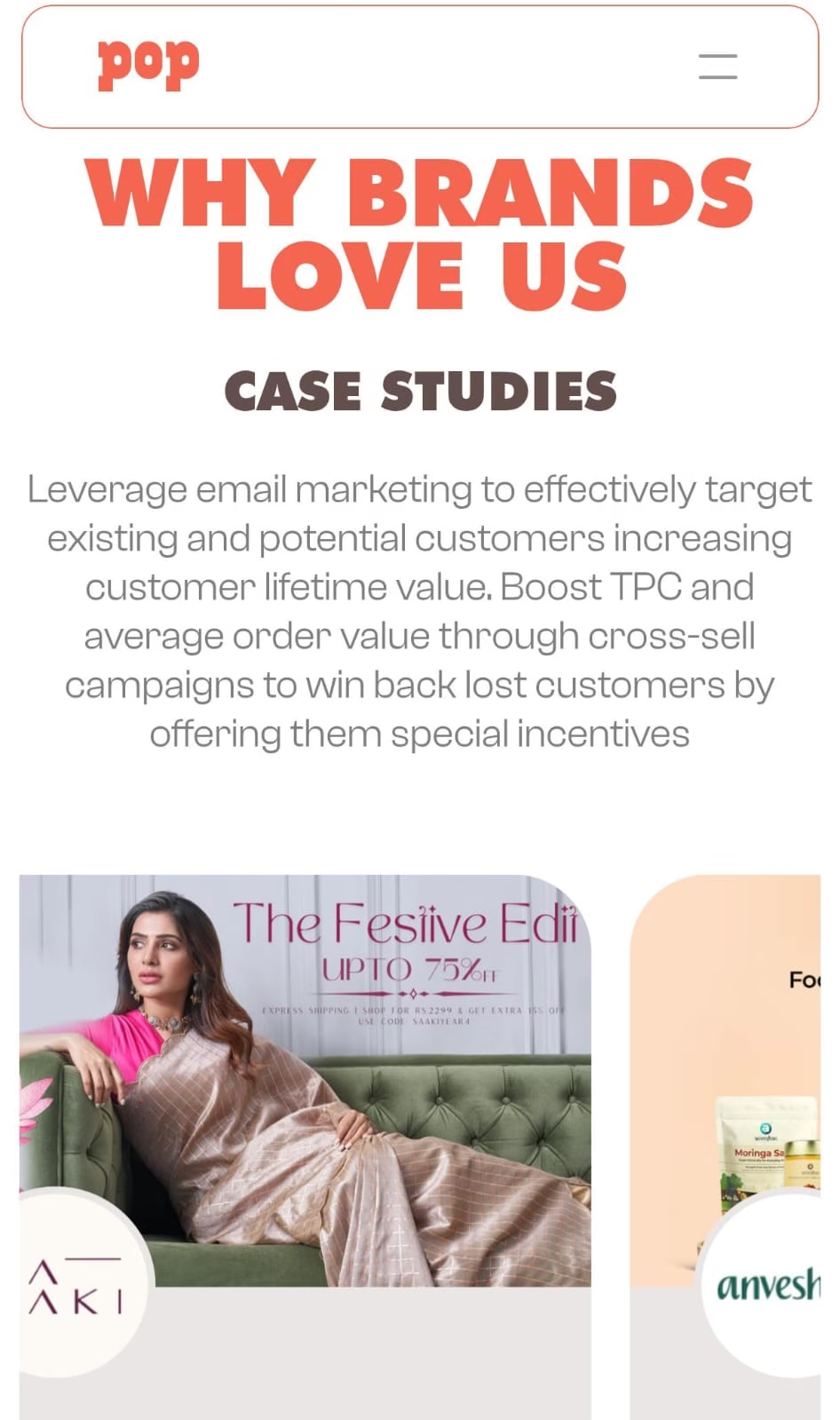
If you’re a small brand looking to grow fast, this kind of shared system can help new customers discover you while giving existing ones more reasons to stay loyal. But if your brand is very niche or positioned as premium, using a shared points system might dilute your brand image. In that case, having your own exclusive program through a platform like Nector.io could be a better fit.
Let’s take an example—imagine you run a small D2C fashion brand for women. Here’s what your loyalty program might look like:
- Sign-up Bonus: 100 points when a customer creates an account
- Repeat Order Rewards: 2 points for every ₹100 spent
- Referral Bonus: 200 points when a referred friend makes a purchase
- Social Media Engagement: 50 points for following the brand on Instagram
- Product Reviews: 50 points for leaving a review
Customers can redeem these points for discounts, early access to new launches, or small freebies. Whether you use Popcoins to grow through partnerships or Nector.io to stay brand-focused—the structure should always align with your product, audience, and business goals.
"The purpose of a loyalty program is not to increase loyalty. It is to change customer behavior."
— Fred Reichheld, Creator of the Net Promoter Score (NPS)
5. Conclusion
Loyalty programs are a must for D2C brands—when designed the right way. They help reduce customer acquisition costs, boost lifetime value, and build a loyal community.
Platforms like Nector.io make it easy to create custom programs, while Popcoins allows cross-brand point redemption, helping you attract new customers at lower costs.
But loyalty programs aren’t a one-size-fits-all solution.
If your products are high-ticket, low-frequency, or if your brand lacks a clear value proposition, they may not be worth the investment. The key is to align the program with your product, customer behavior, and business goals. Done well, loyalty programs can turn one-time shoppers into repeat buyers.
Want help setting one up with tools like Nector.io or Popcoins?. feel free to reach out to us at alibha@daiom.in. We’d be happy to set up a consultation call.
For more informative content and blog, follow and stay tuned to DAiOM.
Subscribe to our NEWSLETTER!


